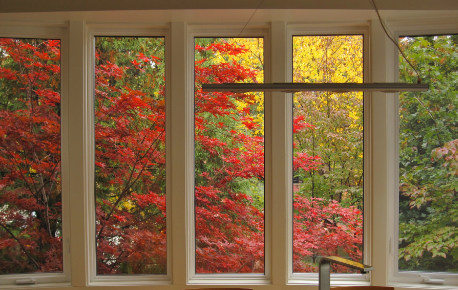Condition: Window frames, sills and sashes should be monitored because the interior condition and hardware of windows change over time. Frame materials can include plastic, aluminum, steel, wood, plastic-clad wood, and metal-clad (steel or aluminum) wood. Window types include double-hung, single-hung, casement, horizontal sliding, projected out or awning, projected in, and fixed. In addition to these, there are jalousies, which are glass louvers on an aluminum or steel frame.
At older sashes, the glazing compound or putty around the glass panels should be monitored carefully, since this is a vulnerable part of the window and its repair is time-consuming. Check the panels in steel or aluminum sashes for signs of deterioration, such as hardened sealant. Check metal sashes for weep holes that have been blocked by paint, sealant or dirt. Weep holes are usually easy to clean. Storm windows and doors should be monitored for operation, weathertightness, overall condition, and fit.
Weatherstripping: Window and door weatherstripping is generally one of three types: metal; foam plastic; or plastic stripping. Each type should have a good fit. Check the metal for dents, bends and straightness. Check foam plastic for resiliency, and plastic stripping for brittleness and cracks. Make sure the weatherstripping is securely held in place.
Shutters & Awnings: Periodically check the shutters’ operation and observe their condition and fit. Shutters close to the ground can be examined from the ground. Shutters out of reach from the ground should be examined from inside the house.
Monitor the condition of your awnings. The attachment to the exterior wall can become loose. Oftentimes, an attachment device in the mortar joint of a brick wall can be easily pulled or slid outward. Some windows and glazed exterior doors have awnings over them for decoration, sun control, and protection from the weather.
[NACHI, Home Maintenance Newsletter – Issue 17]

